In a new series, Vanda Felbab-Brown outlines the way Mexico’s two largest cartels — the Sinaloa Cartel and Cartel Jalisco Nueva -Generación (CJNG) — as well as smaller criminal groups take over and rule local people, economies, and territories. Here she focuses on the strategies, choices, and approaches to rule of the Sinaloa Cartel. This piece was originally published by Mexico Today.
Large segments of Mexico’s people, territory, and economy are falling under the rule of Mexican criminal groups even in areas where violence has not flared up or has declined. However, the way the two largest cartels — the Sinaloa Cartel and Cartel Jalisco Nueva -Generación (CJNG) — as well as smaller criminal groups take over and rule local people, economies, and territories is not uniform. The Sinaloa Cartel deploys strategies distinct from CJNG. The rule and governance by both cartels also vary regionally, influenced by local structural conditions and political culture and by local leadership of the criminal groups. And they evolve over time. In this new series, drawing on my fieldwork in Michoacán, Guerrero, and Baja California Sur in October and November 2021, I outline some of the broad differences in various dimensions of their rule and changes in the cartels’ governance. In today’s OpEd, I focus on the strategies, choices, and approaches to rule of the Sinaloa Cartel. In my subsequent OpEd, on CJNG I continue to analyze the differences among the two cartels, such as in their approach to elections and international relations.
Since the U.S. imprisonment of its most capable and notorious capo — Joaquín “El Chapo” Guzmán Loera — the Sinaloa Cartel has been composed of four key factions led by: a) Ismael “El Mayo” Zambada, a brainy old-timer; b) Rafael Caro Quintero, one of the co-founders of the Guadalajara Cartel; c) El Chapo’s brother, Aureliano “El Guano” Guzmán Loera; and d) El Chapo’s four sons known collectively as Los Chapitos. They each have somewhat different style of rule informed by different histories and trajectory in the criminal world, just as different CJNG factions have, led at the top by Nemesio Oseguera “El Mencho” Cervantes. Nonetheless, there is enough consistency in behavior and rule among the various factions within the two cartels to permit the drawing of general group characteristics.
Being a decades-old and very successful criminal group, the Sinaloa Cartel’s self-presentation is one of buttoned-down criminals whose oppressive rule comes with predictability and some level of moderation. Indeed, a key hallmark of the Sinaloa Cartel has been a rather careful calibration of violence that imposes its domination in a form to which local politicians, businesses, and people can develop predictable coping mechanisms. In contrast to CJNG, the Sinaloa Cartel keeps a lower, behind-the-scenes profile, one of “polite extortionists who bring in order, who are civilized criminals, who don’t just drag in violence for the sake of violence,” as a businessman in Baja California Sur whom I interviewed phrased it.
Predictability and moderation of violence have been key features of the Sinaloa Cartel rule even in extortion. Back in 2013 when I was conducting fieldwork in Tijuana just as the Sinaloa Cartel succeeded in wresting control of the city from the Tijuana Cartel, a restauranteur told me:
“During the war [among the Sinaloa and Tijuana Cartels and their local proxies as well as smaller independent criminal groups], life was very difficult. You had to pay [extortion] to many groups. All the time, someone was showing at your door and threatening to burn down your businesses, kill your family. The prices were going up and up, just about weekly. And if one group found out you had paid their rivals, they would also threaten you and your family, even though there was no way to resist. I was considering just selling all my restaurants. But now that Sinaloa won, things are good. You need to pay just once, not weekly, only monthly, the fee has gone down, it’s all easy. They are polite. And they keep the health inspectors and government tax people who used to harass us and asked for hefty bribes away from our neck”
I heard many similar themes about the Sinaloa Cartel in various parts of Mexico almost a decade later. A businessman in Baja California Sur, for example, told me in November 2021:
“Most of the big hotels in Cabo [San Lucas] pay Sinaloa. But it’s much better than before [2015-2018] when CJNG was fighting Sinaloa over the control of Baja Sur. The payments now are very predictable and the collectors [from the Sinaloa Cartel] polite and calm. It’s very civilized dealing with them. And you don’t have to pay once a week and crazy sums, just every few months at a reasonable rate”
His description echoed that of a businessman in Acapulco with whom I spoke there in October:
“Sinaloa, Caro Quintero’s faction, now controls the top extortion in Acapulco. But it’s much better than before. Straight-forward, easy. You don’t have to pay weekly and to men brandishing their weapons in your face; just once every three months now, and it’s calm, you don’t see the weapons. Now, for small businesses, street vendors, who have to pay to Acapulco’s many small [criminal] groups, life is still very difficult”
But the fact that the Sinaloa Cartel is less brazenly in-your-face threatening and aggressive and that it has a capacity to calibrate violence and repression to levels at least somewhat tolerable to local businesses and people does not mean that the Cartel has not engaged in aggressive expansion. Over two decades, El Chapo started aggression wars in Cuidad Juárez, Tijuana, and elsewhere, sometimes provoked, sometimes unprovoked. Nor does the selectivity and calibration of Sinaloa’s use of violence mean that the Cartel, including El Chapo, have shied away from brutal torture of captured internal or external enemies, as El Chapo’s trial had revealed.
Moreover, the Sinaloa Cartel continues to systematically seek to take over the entire vertical chain of many economies in Mexico and not just illegal ones. In my recent Brookings report and Mexico Today series, I detailed how the Sinaloa Cartel has ruthlessly taken over all aspects of fisheries in Mexico — from catch to processing and sales to restaurants, not tolerating resistance.
The Sinaloa Cartel has adopted similar approach to fentanyl production and sales, even though CJNG was the first mover into that devastatingly lethal drug economy. The Sinaloa Cartel not only rapidly followed CJNG lead and took over fentanyl and opioid markets on the U.S. East Coast and eventually expanded fentanyl sales westward, it also purposefully set out to build up vertical control first over fentanyl imports from China, and since 2019 over precursor and pre-precursor imports from China and their processing into fentanyl. It then sells fentanyl powder to smaller criminal groups for their production of fake prescription pills and exports to the United States.
In contrast, as I will detail in my subsequent oped in two weeks, CJNG often merely taxes all local actors, without, at least initially, seeking full control across the entire vertical chain. But, unlike, the Sinaloa Cartel’s rule, its takeover and domination are based on brazen violence. Its modus operandi is to be more ostentatiously violent than anyone else around.
Every armed group, politically-motivated or economically-motivated only, that controls territories and people has to decide how it will rule: Will it rule through brutality only, principally by outcompeting anyone else in violence, as used to be the approach of CJNG and also another Mexican cartel, the Zetas? Or will it also rule by building political capital with various constituencies?
The Sinaloa Cartel has systematically sought to build political capital with various actors: businesses, social influencers such as priests, politicians, armed forces, government officials and institutions, and local populations.
Moderation of violence and being reasonable about extortion rates have been two elements of Sinaloa’s acceptability to those who have to endure its rule.
Moreover, the Sinaloa Cartel has provided other services to local businesses and people, such as keeping away government tax collectors and inspectors. In Acapulco, as a local high-level businessman told me, the Sinaloa Cartel also solved some cases of kidnapping of relatives of businessmen, apprehended the alleged kidnappers, and handed over to authorities.
Similarly, although the Sinaloa Cartel has been deeply engaged in a variety of illegal fishing across Mexico, it has allegedly also approached state officials and officials of Mexico’s fishing regulatory agency Comisión Nacional de Acuacultura y Pesca (CONAPESCA) to offer to enforce compliance with fishing licenses and quotas — something CONAPESCA frequently fails to do because of inadequate resources or corruption.
In short, in addition to moderating violence and extortion, the Sinaloa Cartel also provides other forms of regulations, and is effective in enforcing the rules it chooses to promote or adopt.
These regulatory services are what the Sinaloa Cartel to some extent offers in addition to ordinary people. It also moderates and reduces street criminality, such as robberies. And it is seen as being such an enforcement authority even by government people. In a fishing village in Baja California Sur, for example, after the Sinaloa Cartel moved in and monopolized local fisheries, municipal police officers started sending local people complaining about theft and house robberies to the Sinaloa Cartel halcones to fix such problems, local interlocutors in Baja California Sur told me. On my earlier trips, such as in Chiapas in 2013, I equally heard from local people and journalists about the Sinaloa Cartel suppressing petty criminality –thus obtaining political capital among local people.
During the spring of 2020 as Covid-19 was sweeping the world and Mexico, Mexican and international media became mesmerized by how various Mexican criminal groups, including the Sinaloa Cartel, were handing out social packages of petty cash, food, and sanitizers. However, such social handouts designed to build support among local populations had long been a very purposeful strategy of the Sinaloa Cartel. For decades, the cartel’s leaders have been giving money for fiestas, local churches and church authorities, schools, or to build soccer stadiums. In some places, such Covid-19-related despensas by the Sinaloa Cartel have persisted into late 2021, with the cartel promising local people, as they had told me in November, that it “will save us, make sure the poverty does not crush us,” even as the cartel took over their economies — such as fisheries or cigarette and alcohol sales.
Yet there is also regional variation in the Sinaloa Cartel’s rule and governance. Unlike in the state of Sinaloa, which is the cartel’s core base where it has thick and widespread networks and is deeply locally embedded, its rule in Acapulco, for example, is much more hands-off. As various local journalists explained to me in October, the cartel only steps in when other criminal groups in Acapulco would seek to challenge its monopoly on extortion of top businesses or when their kidnappings and violence gets too intense for the businessmen’s comfort. Nor does the Sinaloa Cartel in Acapulco and Guerrero’s coast appear to be handing out money to schools or churches. My queries to many local interlocutors, such as church leaders, local journalists, human rights activists, and street vendors, in October 2021 did not identify one instance of the Sinaloa Cartel (or for that matter smaller Acapulco-based criminal groups) giving out social handouts in response to Covid-19. Perhaps this difference in Sinaloa’s strategic approach reflects also the different political culture and history in rural versus urban Guerrero: with Acapulco characterized by resource-extraction and rent-seeking with little focus on social capital even in legal economies, as local researchers described it to me, while rural Guerrero has much more of a tradition of benefactor drug lords.
At the end of the day, wherever in Mexico it is active, the Sinaloa Cartel still imposes repressive unaccountable domination underpinned by violence, even if calibrated. But for those who must endure it, because they can find no reliable protection by the Mexican government, the Sinaloa Cartel’s rule is far better than persistent violent contestation among criminal groups. And it is less disruptive of everyday life than the far more unpredictable and in-your-face aggressiveness of many other criminal groups in Mexico, including Sinaloa’s principal rival, CNJG.
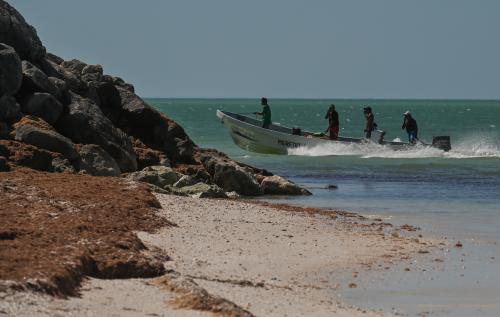
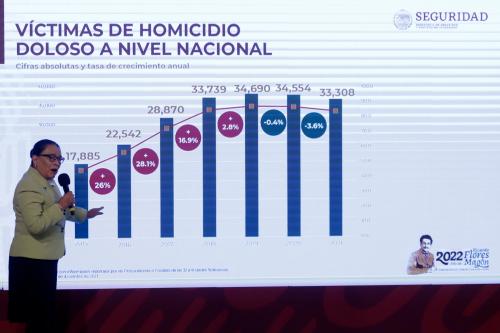
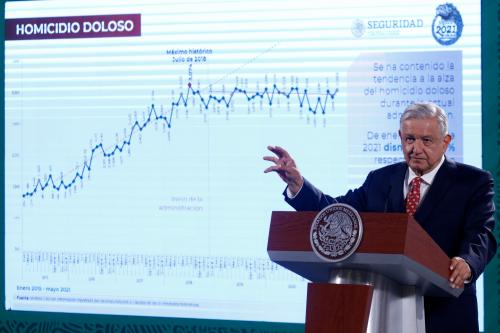

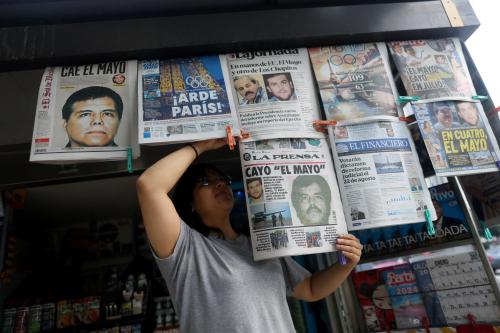
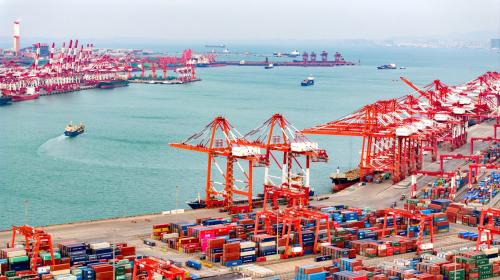
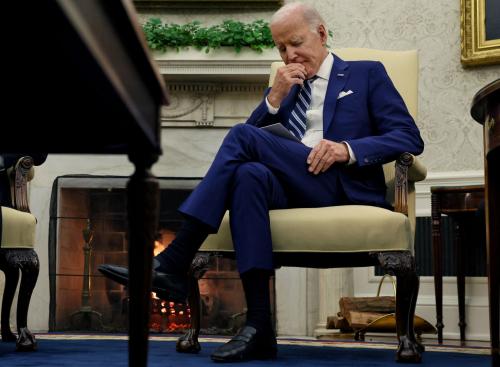
Commentary
Op-edHow the Sinaloa Cartel rules
April 4, 2022